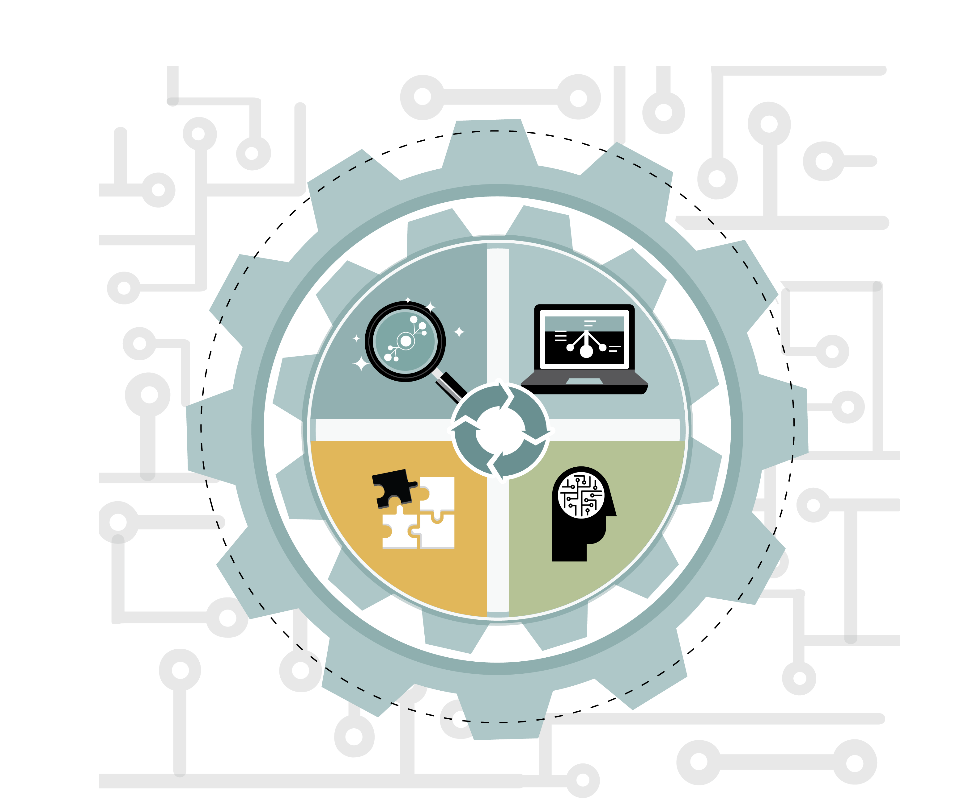Market forces are fundamentally reshaping the industry.
Many large organizations are exploring how to accelerate innovation through lean and design thinking approaches. They often find that traditional new product and market development approaches get mired with cost and schedule over runs. Clareo’s FastPath, a lean and rapid innovation approach, addresses these issues. Learning Plans are a key aspect of that approach. They document the plan to validate assumptions and uncertainties that are critical to success, typically measured through metrics such as customer or market acceptance and business value. Assumptions and uncertainties represent the unknowns that pose risks to the success of an effort, and Learning Plans should address the most critical ones. Learning Plans should be designed to achieve maximum learning at the lowest possible cost. They may be used with milestone-based funding, where continued funding of the effort depends on successful validation of learning plans.
Learning Plans are not substitutes for project plans. Project plans detail tasks required to accomplish something and can break down the work to the granular level. Learning Plans should focus on the key learning elements – what you need to learn regarding your critical assumptions and uncertainties; and how you’re going to learn, such as through customer/user input, which specific customers, and what aspects. Learning reports document progress against Learning Plans, and indicate if you should pivot, and how.
Learning Plans should focus on the key learning elements – what you need to learn regarding your critical assumptions and uncertainties; and how you’re going to learn.
There are many examples of Learning Plans available in publications and texts, and we’ve included a few as reference. However, these examples are typically from smaller startups, and the approach needs to be modified for larger organizations, as discussed below.

Validation Approaches Used in Learning Plans
There is no universal approach to validate or test assumptions and uncertainties, and it can get confusing when writing a Learning Plan for the first time. The key to a successful Learning Plan is to maximize learning at minimal cost. Customer or end user input is usually the best approach, especially when it involves a better understanding of their needs, or other qualitative aspects such as how they may use a product or feature. Where learning can be validated quantitatively, such as in a test environment, it may not be necessary to seek direct customer input. Other approaches can involve simulation or prototyping, where validation may be shown in a computer-simulated model or a lab before proving it in the field.
Customer/User Input: Customer input is one of the best ways to validate key assumptions in the viability of a product or feature. It is important that the true customer or user, and not just a proxy, validates your assumption. There are many ways to achieve this:
- Discussion with customers and end users to understand their problems and validate assumptions, especially around what they value
- Testing usability (UX/UI) early and often with customers/users
- Determining customer’s actual usage through usage statistics from alpha and beta customers, or shadow usage where the new product/solution runs in parallel with the existing solution
Test Environment or Research: This is recommended when a new product or solution is first developed, and its desired performance attributes can be validated quantitatively. Of course, customer input into assumptions around value is still an important first step. Some of these approaches are illustrated below:
- Validation against a quantifiable performance metric, such as Castrol validating the speed, in minutes, to change an oil cartridge using a minimum viable prototype
- Validation of achieving desired condition, such as determining the amount of fan cooling required for new server hardware design
- Validation through research or benchmarking, such as a stationary energy storage manufacturer benchmarking manufacturing costs and assembly time with competitors
Note that such validation will not replace testing of the product against specification; that is expected, of course. Rather, based on the desired outcome (e.g. prototype vs. fully functional product), the emphasis on such traditional testing may be appropriately sized for validation vs. a perfected solution.
Examples of Successful Learning Plans
Castrol used a minimum viable prototype to validate that it took only 90 seconds to change an oil cartridge.
Validating Customer and Market Demand
Zappos is the largest online shoe retailer, with sales over $2 billion. Zappos’ founder, Nick Swinmurn, originally started an online shoe store called Shoesite.com which he quickly changed and scaled to Zappos. Nick started in a lean and rapid manner. Initially, he visited local shoe stores, and with the owner’s permission, photographed shoes and put them up on his website. He didn’t start with a huge investment to build an e-commerce company. In the beginning, he manually shipped orders and handled payments and returns. It was an experiment designed to answer a key uncertainty at the time: Would consumers be willing to buy shoes online when promised a superior customer experience? He was able to validate this uncertainty with very little investment. It was only after that initial validation that he went about building a scalable business.
Service Optimization and Scaling
Food on the Table provides easy-to-cook recipes and grocery lists based on sales at local stores. This requires a complex algorithm with a lot of data crunching – lists of stores, what they sell, weekly updates on sales and discounts, recipes, and finally the ability to match consumer preferences to recipes and store promotions. However, Founder and CEO Manuel Rosso and his team didn’t start by building all this software. They first visited local grocery stores in Austin and interviewed shoppers to identify one that was interested in their service. They visited this customer every week, with shopping lists and recipes chosen based on her preferences and local store promotions. The list was updated with her feedback. Manuel charged her $9.95 for this service as a way to test consumers’ willingness to pay. This was not a scalable business, yet. The team learned more each week, adding customers as they went. They continued their manual process until they couldn’t handle the load any more. That’s when they started developing software, beginning with emailing lists and recipes, and eventually taking payments online. After initial validation at their first store, they created software that could parse store promotions, added more stores in their region, and eventually expanded coverage nationwide.
References
- Innovating through Radical Efficiency; http://www.clareo.com/blog/2016/5/13/innovating-through-radical-efficiency
- The Lean Startup: How Today’s Entrepreneurs Use Continuous Innovation to Create Radically Successful Businesses, Eric Reis
- The Ultimate Guide to Minimum Viable Products; http://scalemybusiness.com/the-ultimate-guide-to-minimum-viable-products/


